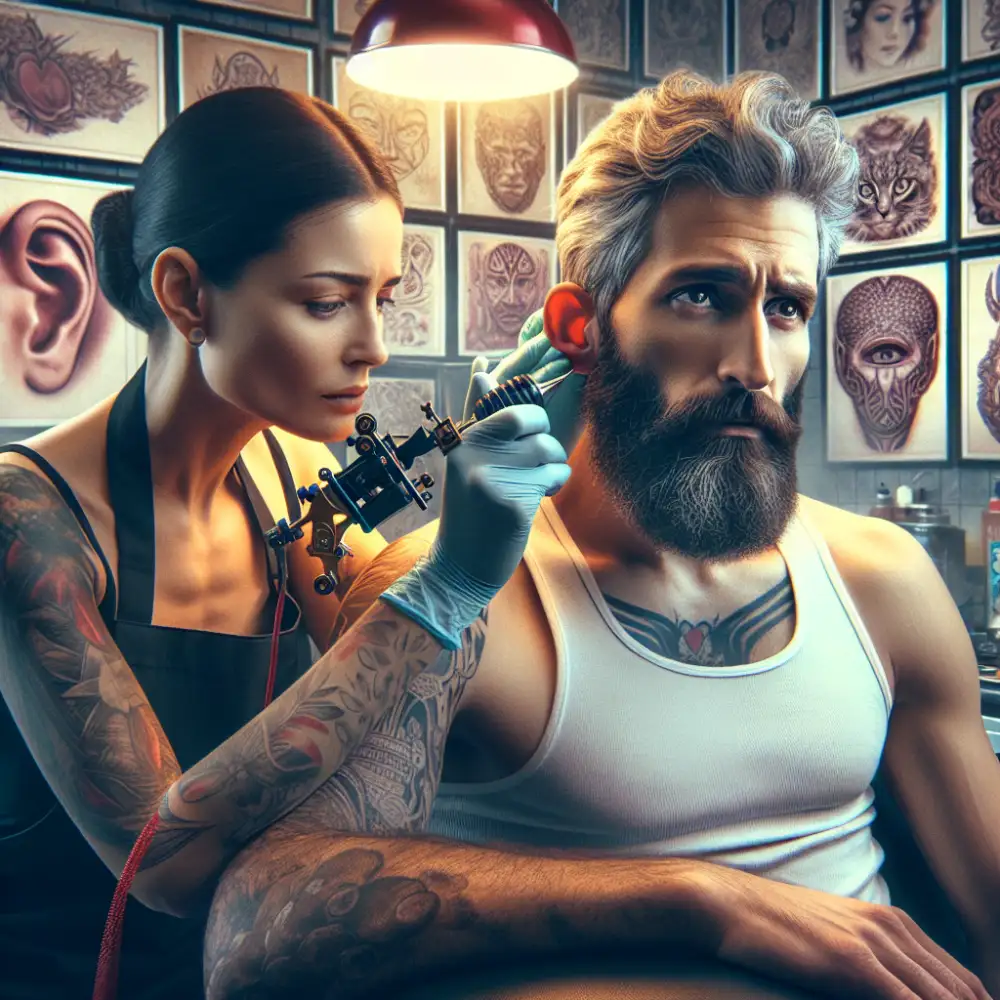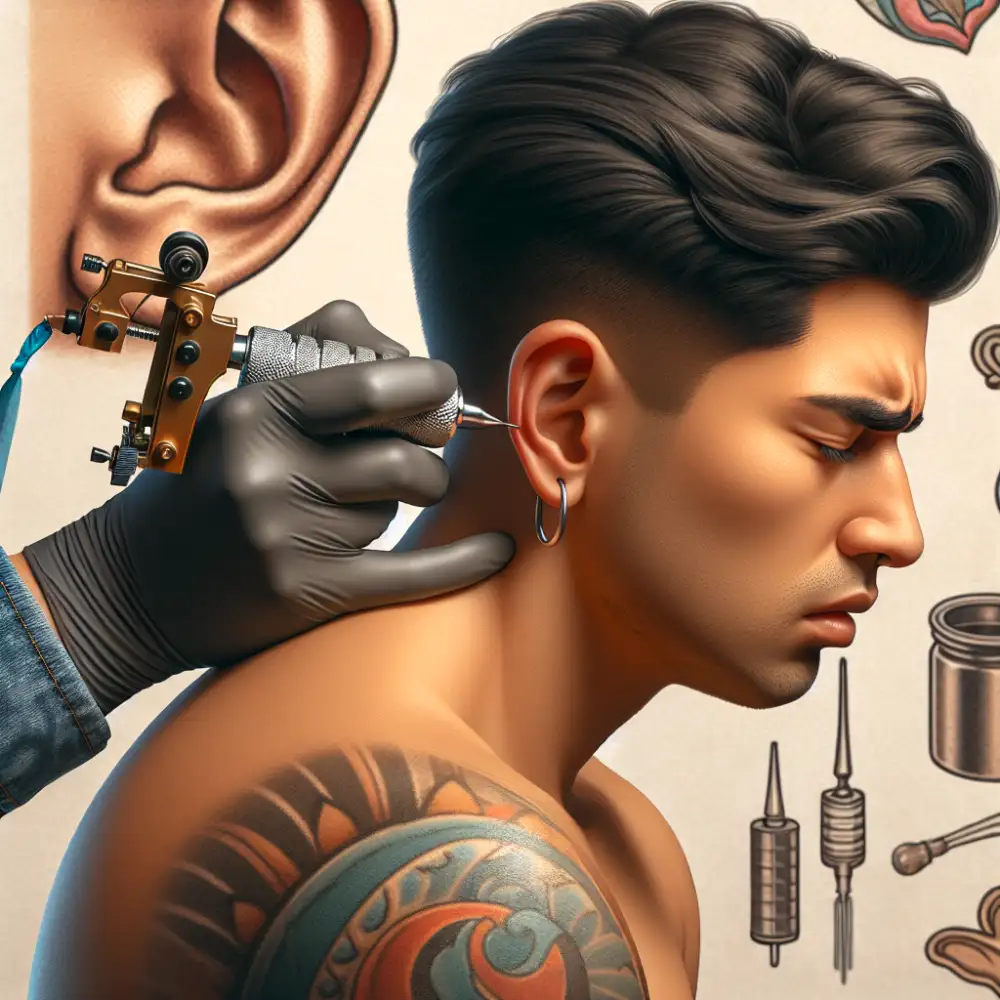Do Ear Tattoos Hurt? We Rate the Pain Level.

Ear Anatomy and Pain Perception
The human ear is a complex and delicate organ responsible for hearing and balance. It's divided into three parts: the outer ear, the middle ear, and the
Factors Influencing Pain Levels
Pain is a complex experience influenced by a wide range of factors. Biological factors, such as the type and severity of injury or illness, play a significant role. The presence of inflammation or nerve damage can also heighten pain perception. Psychological factors, including stress, anxiety, and depression, can amplify pain signals and make them feel more intense. Social factors, such as cultural norms and support systems, shape our understanding and response to pain. Past experiences with pain can also influence our current perception. Additionally, lifestyle factors like sleep, physical activity, and diet can impact pain levels.
Pain Management Techniques
There are many different ways to manage pain, and what works for one person may not work for another. It's important to find what works best for you and to work with your doctor to create a pain management plan. Some common pain management techniques include: medication, physical therapy, massage, acupuncture, relaxation techniques, and cognitive-behavioral therapy.
Medications can be used to help reduce pain and inflammation. Physical therapy can help to improve range of motion and strengthen muscles. Massage can help to relax muscles and reduce tension. Acupuncture is a traditional Chinese medicine technique that involves inserting thin needles into specific points on the body. Relaxation techniques, such as deep breathing and meditation, can help to reduce stress and pain. Cognitive-behavioral therapy (CBT) is a type of therapy that can help people to change the way they think about and manage pain.
Healing and Aftercare Considerations
Proper healing is crucial for the best outcome. Follow your healthcare provider's instructions carefully, including wound care and medication. Keep the treated area clean and dry, and avoid touching it unnecessarily. Be aware of potential signs of infection, such as redness, swelling, increased pain, or discharge. Report any concerns to your doctor immediately. Depending on the procedure, you may need to limit certain activities or avoid strenuous exercise for a period. Your doctor will provide specific guidelines for resuming normal activities.
Potential Risks and Complications
As with any medical procedure, it's essential to understand potential risks and complications. These can vary depending on the specific procedure and individual patient factors. Common risks associated with medical procedures can include infection, bleeding, adverse reactions to anesthesia, and allergic reactions to medications or materials used. It's crucial to discuss your medical history, any allergies, and current medications with your healthcare provider to minimize these risks. Remember, open communication with your doctor is vital throughout the entire process, from pre-operative consultations to post-procedure care.

Consulting a Professional Tattoo Artist
Consulting a professional tattoo artist is crucial in your tattoo journey. During the consultation, openly discuss your desired tattoo design, placement, and style preferences. A skilled artist will attentively listen to your vision, provide expert advice, and address any concerns you may have. They possess a deep understanding of anatomy, skin types, and ink reactions, ensuring your tattoo is both aesthetically pleasing and safe. Moreover, they can create a custom design tailored to your unique personality and preferences. Don't hesitate to ask about their experience, sterilization practices, and portfolio to make an informed decision. Remember, a consultation is a collaborative process that sets the foundation for a successful and meaningful tattoo experience.
Personal Pain Threshold Variations
Everyone experiences pain differently. What might feel like a mild annoyance to one person could be excruciating for another. This is due to a complex interplay of factors that influence our individual pain thresholds.
Genetics play a role, influencing the sensitivity of our pain receptors and how our bodies process pain signals. Psychological factors, like stress, anxiety, and past experiences with pain, can also significantly impact our perception.
Furthermore, cultural norms and expectations shape how we express and cope with pain. Gender differences in pain perception have also been observed, potentially influenced by hormonal fluctuations and societal expectations. Understanding these variations is crucial for healthcare professionals to provide effective and empathetic pain management tailored to each individual's needs.
Ear tattoos? Imagine a tiny woodpecker tapping on a seashell, but instead of wood, it's your skin.
Elara Nightshade
Realistic Expectations and Experiences
It's crucial to understand that AI, like any technology, has its limitations. While it can automate tasks, provide insights, and even mimic human-like conversation, it's not a magical solution for everything. AI tools are only as good as the data they are trained on, and they may not always provide perfect or unbiased results. It's important to critically evaluate AI-generated content and use it as a starting point rather than a finished product. Remember that AI is a tool that can augment human capabilities, not replace them entirely.

Published: 18. 06. 2024
Category: Food



